Convolution
A convolution operation is a mathematical operation used in various fields such as signal processing, image processing, and machine learning. It involves combining two functions to produce a third function that expresses how the shape of one is modified by the other.
In this tutorial, we want to explore and compare different implementations of 2D convolution.
We will implement 2D convolution in Python using various libraries. Specifically, we will look at three different methods: scipy_fft, jax_fft, and scipy_convolve2d.
The total time taken by each method will be measured and compared.
Import necessary libraries
[1]:
import numpy as np
import matplotlib.pyplot as plt
from wolfhece.wolf_array import header_wolf, WolfArray
from datetime import datetime as dt, timedelta
Creation of a matrix and a filter
[3]:
def set_a_f(n, n_filter):
h = header_wolf()
h.shape = (n, n)
h.set_resolution(0.1, 0.1)
h_filter = header_wolf()
h_filter.shape = (n_filter, n_filter)
h_filter.set_resolution(0.1, 0.1)
a = WolfArray(srcheader=h)
f = WolfArray(srcheader=h_filter)
return a, f
Setting up data for different cases
[4]:
to_test = [(100, 10),
(200, 20),
(500, 50),
(1000, 100),
(2000, 200),
(5000, 500),
# (10000, 1000),
]
all = [set_a_f(n, n_filter) for n, n_filter in to_test]
Calculation of the convolution with Numpy
[ ]:
for a, f in all:
fig, axes= plt.subplots(1, 2, figsize=(10, 5))
n = a.shape[0]
a.array[n//2-n//4:n//2+n//4,n//2-n//4:n//2+n//4] = 2.0
a.plot_matplotlib((fig, axes[0]))
# make a circular filter with exponential falloff
n_filter = f.shape[0]
f.array[:,:] = np.asarray([np.exp(-((i-n_filter/2)**2+(j-n_filter/2)**2)/n_filter**2) for i in range(n_filter) for j in range(n_filter)]).reshape((n_filter,n_filter))
f.plot_matplotlib((fig, axes[1]))
plt.show()
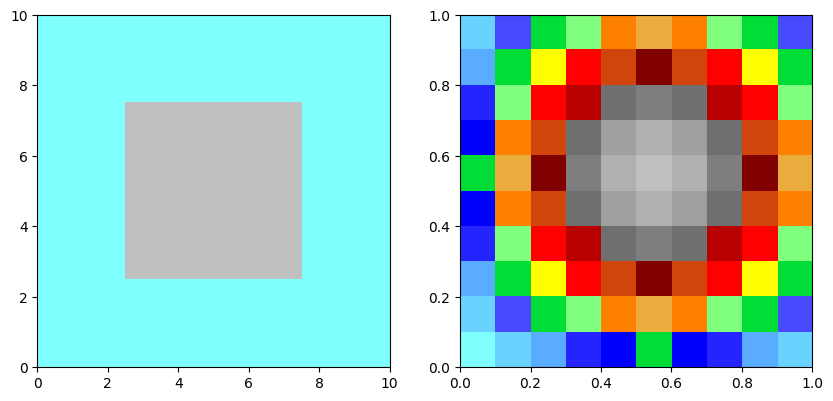
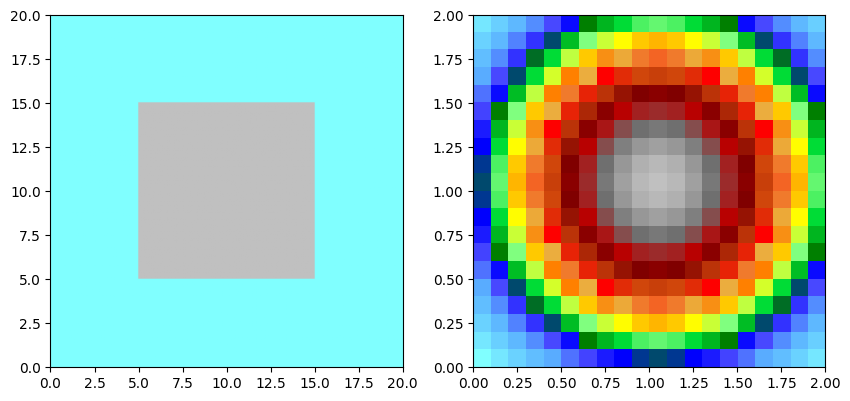
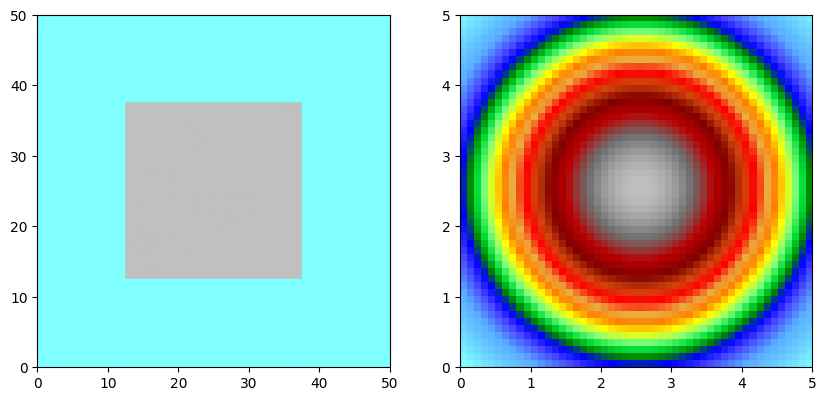
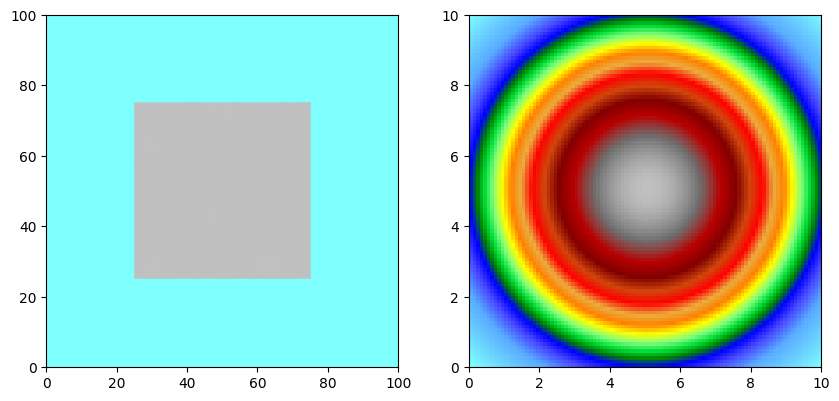
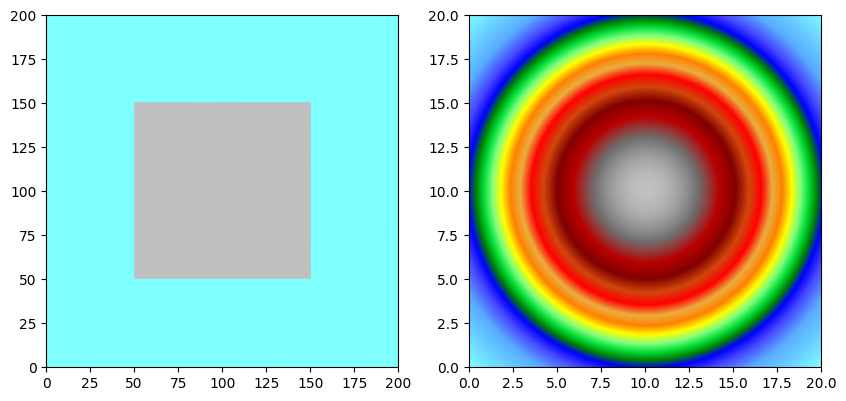
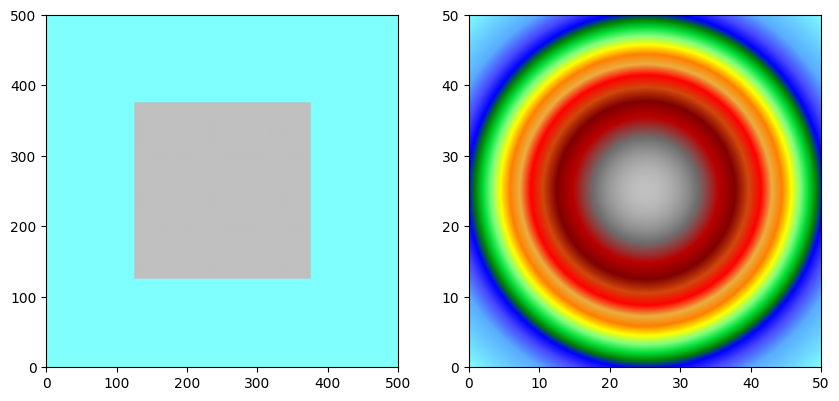
Calculation of convolution using Fourier transform
For larger matrices, convolution can be computed more efficiently using the Fast Fourier Transform (FFT).
We test two implementations: one using scipy.fft and another using jax.numpy.fft.
scipy_fft
jax_fft
[ ]:
for a, f in all:
fig, axes = plt.subplots(1, 3, figsize=(15, 5))
# scipy fft
start = dt.now()
scipy_fft = a.convolve(f, method='scipyfft', inplace=False)
scipy_runtime = dt.now() - start
scipy_fft.plot_matplotlib((fig, axes[0]))
axes[0].set_title('scipy fft')
# jax fft
start = dt.now()
jax_fft = a.convolve(f, method='jaxfft', inplace=False)
jax_runtime = dt.now() - start
jax_fft.plot_matplotlib((fig, axes[1]))
axes[1].set_title('jax fft')
if a.shape[0] <= 500:
#classic == scipy.convolve2d
start = dt.now()
classic = a.convolve(f, method='classic', inplace=False)
classic_runtime = dt.now() - start
classic.plot_matplotlib((fig, axes[2]))
axes[2].set_title('classic')
else:
classic_runtime = timedelta(0)
axes[2].axis('off')
plt.figure(figsize=(10, 5))
plt.bar([0,1,2], [scipy_runtime.total_seconds(),
jax_runtime.total_seconds(),
classic_runtime.total_seconds()],
tick_label=['scipy', 'jax', 'classic'])
plt.show()
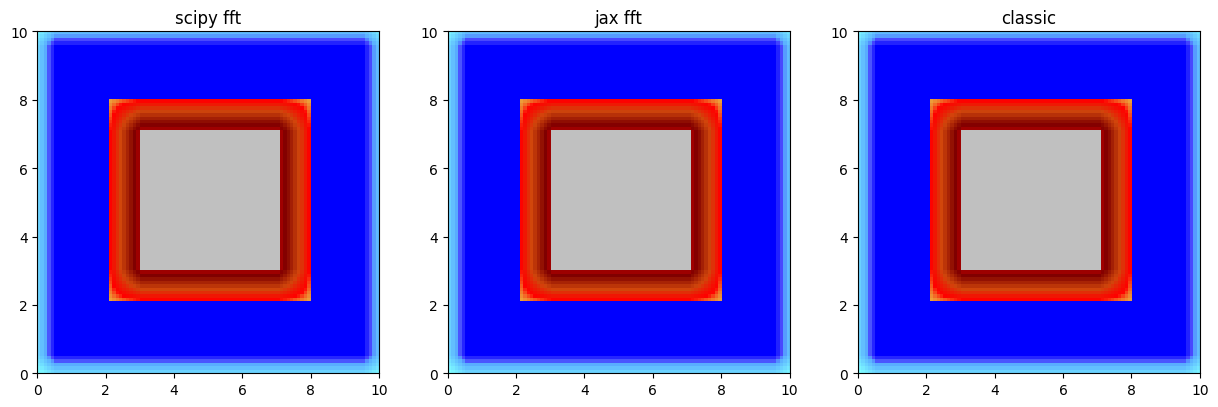
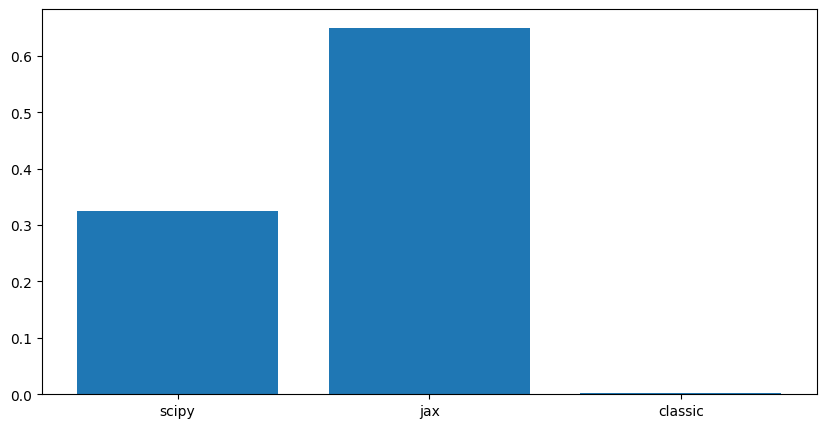

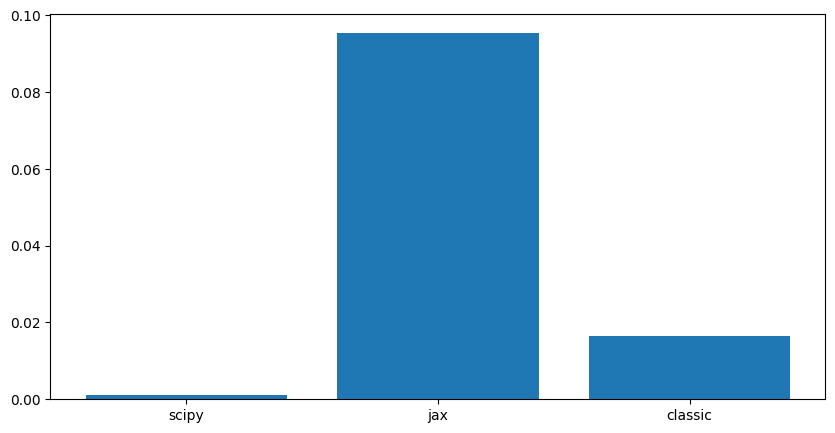
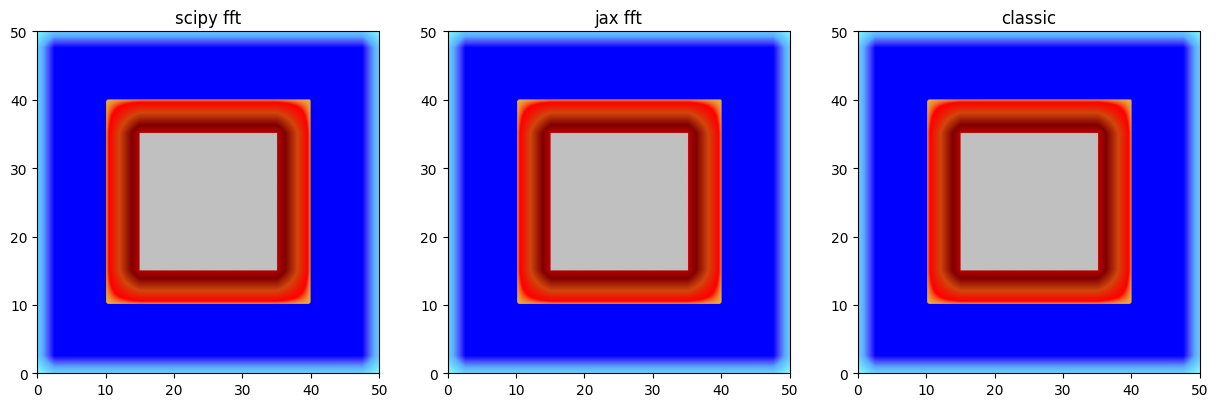
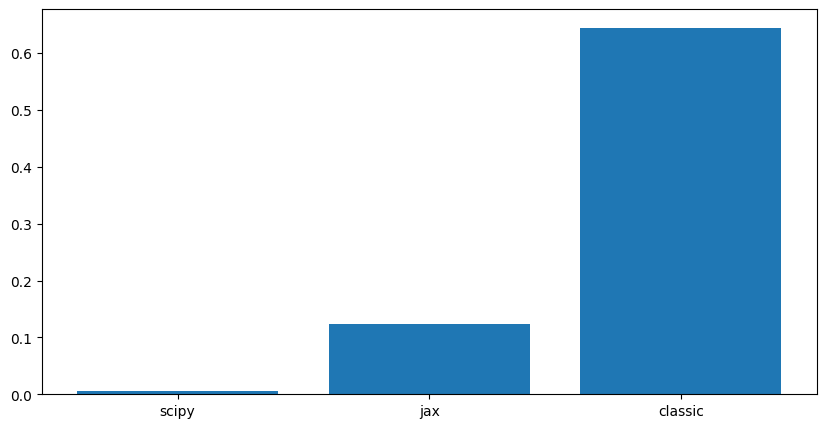
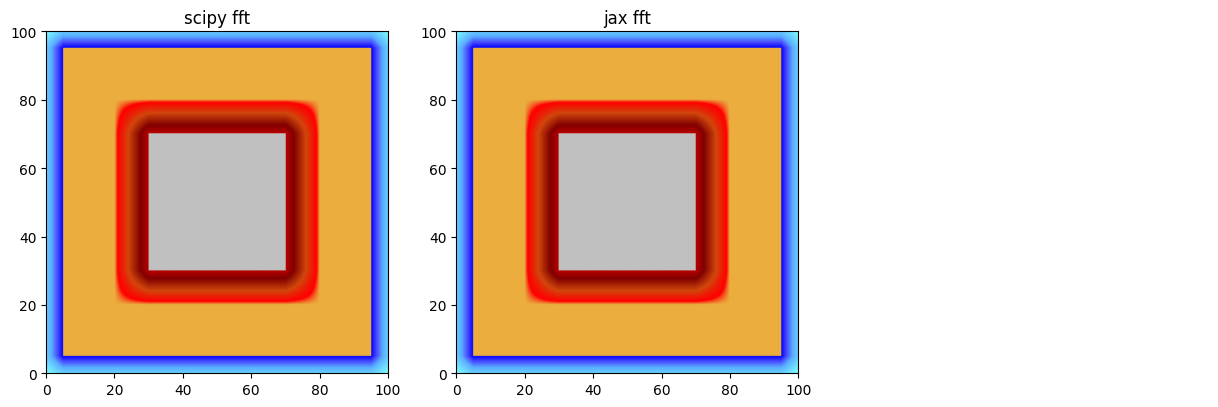
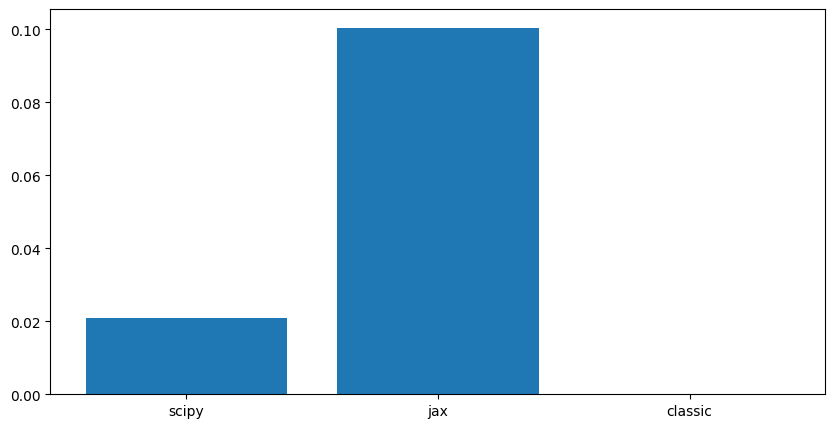
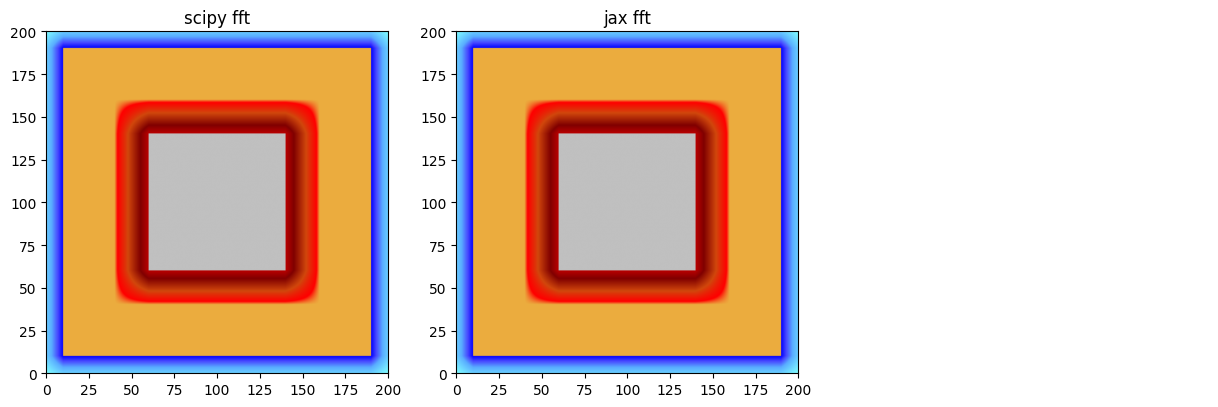
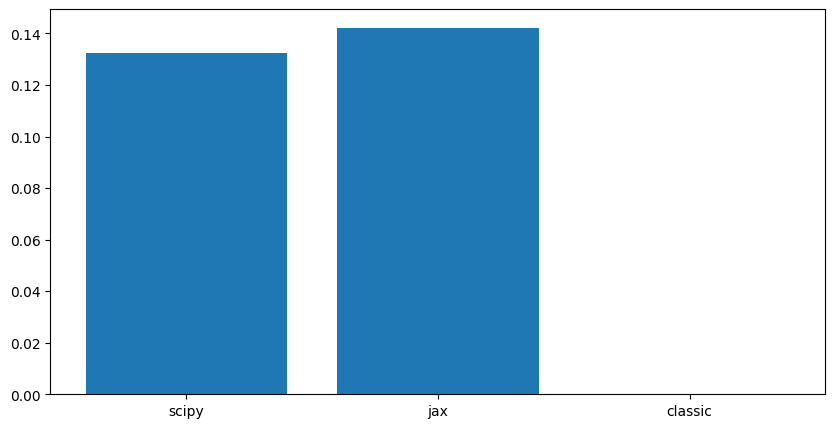
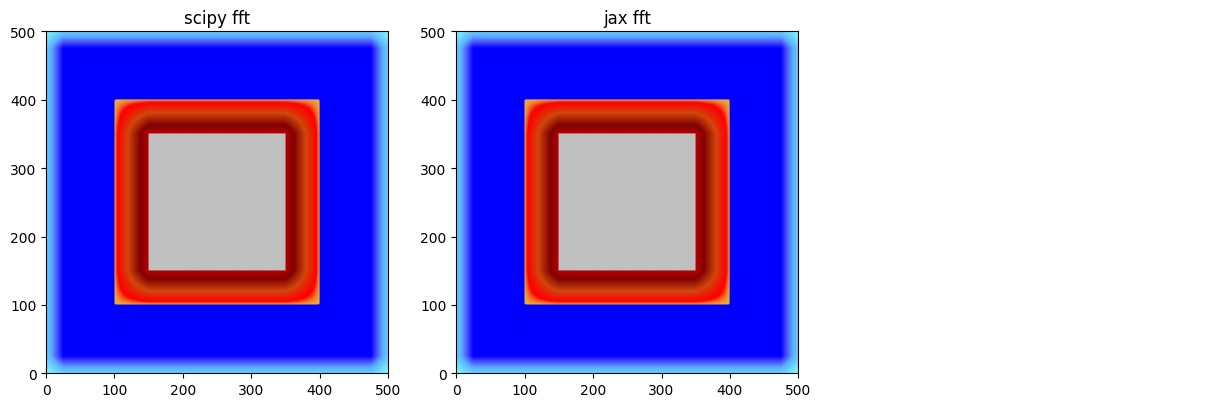
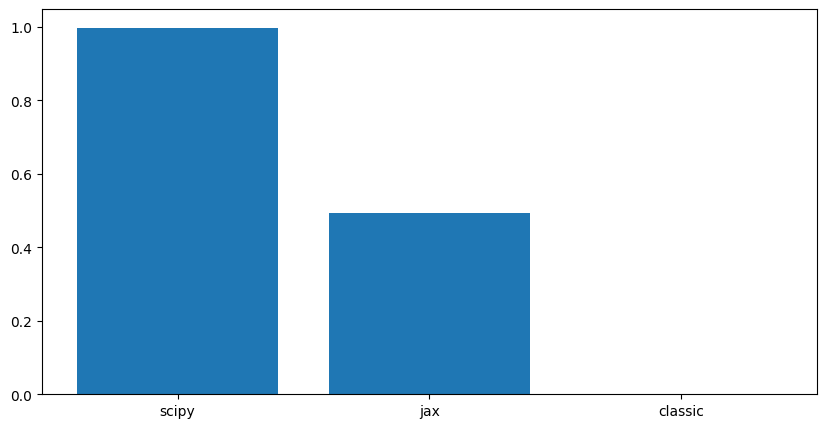
Conclusions
Computattion time evolves with the size of the matrix and the filter.
For very large matrices, the FFT-based methods are significantly faster than the direct convolution method.
Jax only outperforms Scipy for very large matrices, likely due to its optimization for GPU acceleration. But for smaller matrices, the overhead of using Jax may not be justified.